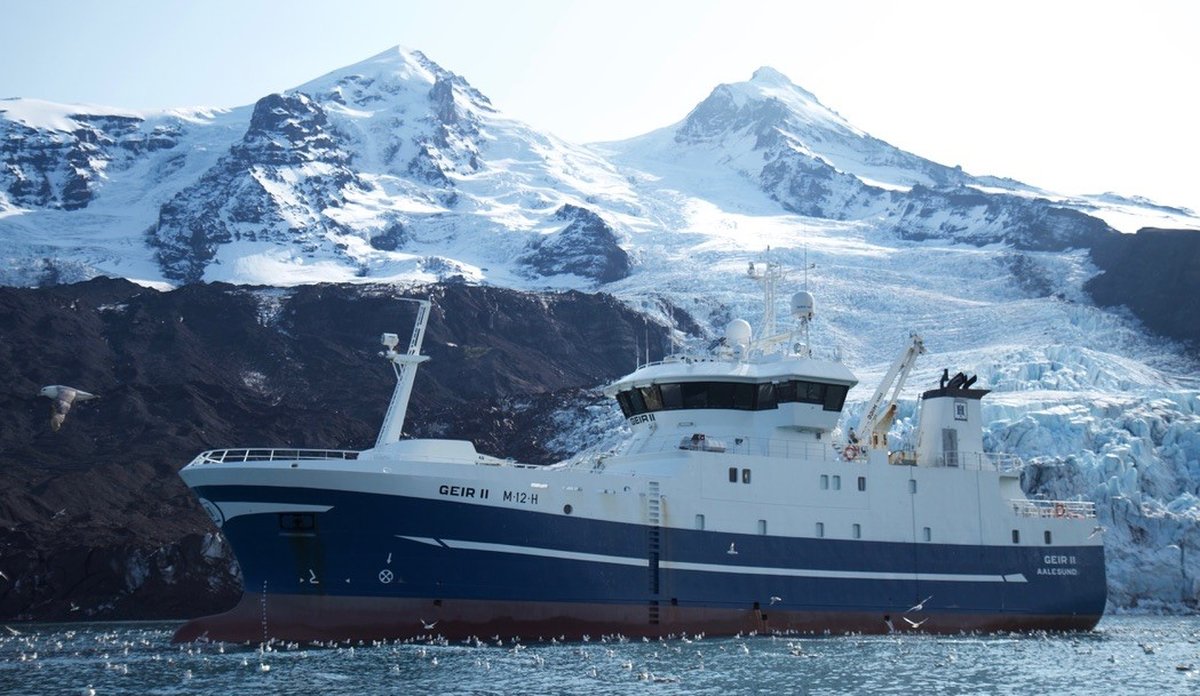Research continues into the mysterious cod at Jan Mayen

I 2019 var fiskebåten «Geir II» på kartleggingsfiske til Jan Mayen med HI-forskere om bord.
Photo: Jan Sindre Stanghelle (by agreement)
Line med torsk kommer opp av dragerbrønnen på Geir II. Dette bildet er fra forrige tur med "Geir II" i vår.
Photo: Audun Hjertager / Havforskningsinstituttet
Linebåtane "Geir II" og "Nesbakk" har fått kartleggningskvoter på 400 tonn torsk kvar ved Jan Mayen.
Photo: Harald Næss / Havforskningsinstituttet
Jan Mayen har inga havn. Harald Næss måtte derfor bli skyssa til land med MOB-båten. Her i Hvalrossbukta.
Photo: Harald Næss / Havforskningsinstituttet
Jan Mayen er ei norsk, vulkansk øy heilt nordvest i Norskehavet. Grønland er nærmaste, større landmasse.
Photo: Harald Næss / Havforskningsinstituttet
Forsvaret og Meteorologisk institutt har stasjonar på Jan Mayen.
Photo: Harald Næss / Havforskningsinstituttet
For å få ein meir effektiv tur, hadde havforskarane avtalt skyssen heim med Forsvaret.
Photo: Harald Næss / HavforskningsinstituttetPublished: 26.08.2019 Updated: 04.09.2019
“The latest catch shows that the cod both spawn and feed in this area over the summer”, says research technician Harald Næss.
The fishing vessel “Geir II” is on its second trip to Jan Mayen, and it has a scientific quota of 400 tonnes of cod. Harald Næss joined it for the first part of its voyage, in order to obtain more samples of this “new” fish.
A previously unknown cod population in the far northwest
It was last year that the longliner “Loran” hauled in 450 tonnes of cod in the far northwest of the Norwegian Sea.
The catch generated a lot of interest in the industry. Which cod population did these fish belong to? The question is both scientific and political.
The Ministry of Trade, Industry and Fisheries issued a special quota for scientific fishing in the area, half of which went to “Geir II”.
Mostly “skrei”
“DNA testing of Loran’s first catch showed that around 60 percent of it consisted of Northeast Arctic cod, or “skrei” as it is known in northern Norway”, says marine scientist Bjarte Bogstad.
Just over 30 percent was Icelandic cod and seven percent turned out to be Norwegian coastal cod.
Monitoring continues
“Geir II” departed Ålesund on 30 July and is expected back at the turn of the month August/September.
“On the first leg we set 5,000 longline hooks at nine fixed stations. After that the boat continued its normal fishing activities”, says Harald Næss.
He has secured DNA samples from around 150 cod, and recorded their age, sex and stomach contents.
The previous trip made by “Geir II” in the spring observed spawning cod in this area for the first time ever. The cod that were caught this time had spawned.
A full stomach
“Nevertheless, the fish were nice and fat. Based on their stomach contents, it appears they have good access to small crustaceans, flying squid and shrimps.
This time the cod were in shallower waters than when “Geir II” did its first survey in the spring. At the shallowest fishing location, the water was only 30 metres deep.
When “Geir II” returns home with the samples, researchers will set about analysing their genetic material and otoliths, which tell us their age.
Research technician Harald Næss was lucky enough to be able to hitch a lift home with a Hercules operated by the Norwegian Armed Forces.

